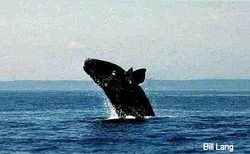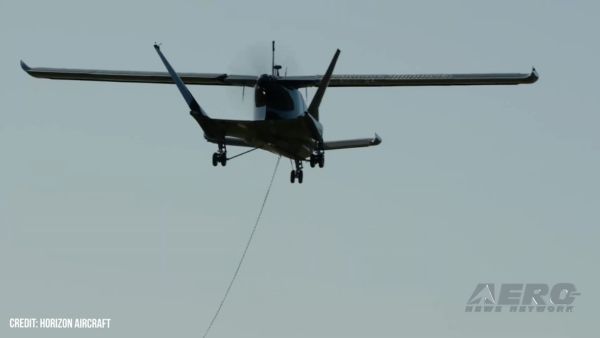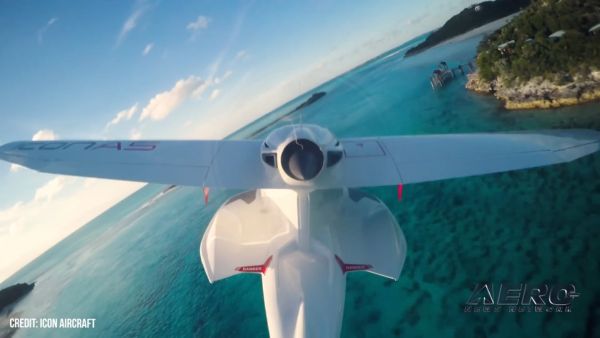Thu, Jan 23, 2003
It's a 'Family Thing'
 Science & Technology International®,
STI, has begun a mission along the northeastern coastline of
Florida to locate and study the behaviors of whales, under a U.S.
Navy contract. STI is using its 200-foot long airship
outfitted with STI's hyperspectral imaging camera system, LASH
(Littoral Airborne Sensor Hyperspectral), to conduct the whale
searches. STI's LASH system detects submerged objects in real time.
STI's camera systems also locate submarines and mines for the U.S.
Navy. This Florida mission is focused on protecting the endangered
North Atlantic Right Whale as well as identifying the migration
patterns of other whales.
Science & Technology International®,
STI, has begun a mission along the northeastern coastline of
Florida to locate and study the behaviors of whales, under a U.S.
Navy contract. STI is using its 200-foot long airship
outfitted with STI's hyperspectral imaging camera system, LASH
(Littoral Airborne Sensor Hyperspectral), to conduct the whale
searches. STI's LASH system detects submerged objects in real time.
STI's camera systems also locate submarines and mines for the U.S.
Navy. This Florida mission is focused on protecting the endangered
North Atlantic Right Whale as well as identifying the migration
patterns of other whales.

"We are honored to take part in this historic and important
mission," said Charlie Hawkins, STI's LASH Airship deputy program
manager. "To our knowledge, hyperspectral imaging has never been
used before to detect whales in Florida. STI and the U.S. Navy will
be providing Florida ocean resource managers valuable information
as to the location and numbers of whales. This data will assist in
protecting Florida's whale population particularly the endangered
North Atlantic Right Whale."
"The Navy is very interested in the safety and welfare of marine
mammals such as the North Atlantic right whale," said Don Statter,
Jr., senior imagery scientist for the U.S. Navy Airship Program.
"We see this as a great opportunity to test passive cameras from a
benign platform to see whales. Our goal is to locate whales,
capture their behavior, plot their location and transmit the
information via digital data link to a ground site."
 "STI's
technology is promising," said Dr. Jim Hain, right whale biologist
and associated scientist at Woods Hole, a non-profit organization.
"Research has shown right whales can only be detected about 30
percent of the time at the surface. The goal is to avoid
ship-strikes against whales. New technologies, like STI's LASH
system combined with an airship, are part of the solution to
protect this endangered species."
"STI's
technology is promising," said Dr. Jim Hain, right whale biologist
and associated scientist at Woods Hole, a non-profit organization.
"Research has shown right whales can only be detected about 30
percent of the time at the surface. The goal is to avoid
ship-strikes against whales. New technologies, like STI's LASH
system combined with an airship, are part of the solution to
protect this endangered species."
More News
From 2023 (YouTube Version): Legacy of a Titan Robert (Bob) Anderson Hoover was a fighter pilot, test pilot, flight instructor, and air show superstar. More so, Bob Hoover was an i>[...]
Get The Latest in Aviation News NOW on Instagram Are you on Instagram yet? It's been around for a few years, quietly picking up traction mostly thanks to everybody's new obsession >[...]
Aero Linx: B-52H Stratofortress The B-52H Stratofortress is a long-range, heavy bomber that can perform a variety of missions. The bomber is capable of flying at high subsonic spee>[...]
Altimeter Setting The barometric pressure reading used to adjust a pressure altimeter for variations in existing atmospheric pressure or to the standard altimeter setting (29.92).>[...]
"Knowing that we play an active part in bettering people's lives is extremely rewarding. My team and I are very thankful for the opportunity to be here and to help in any way we ca>[...]
 Classic Aero-TV: Remembering Bob Hoover
Classic Aero-TV: Remembering Bob Hoover ANN FAQ: Follow Us On Instagram!
ANN FAQ: Follow Us On Instagram! ANN's Daily Aero-Linx (05.15.24)
ANN's Daily Aero-Linx (05.15.24) ANN's Daily Aero-Term (05.15.24):Altimeter Setting
ANN's Daily Aero-Term (05.15.24):Altimeter Setting Aero-News: Quote of the Day (05.16.24)
Aero-News: Quote of the Day (05.16.24)





